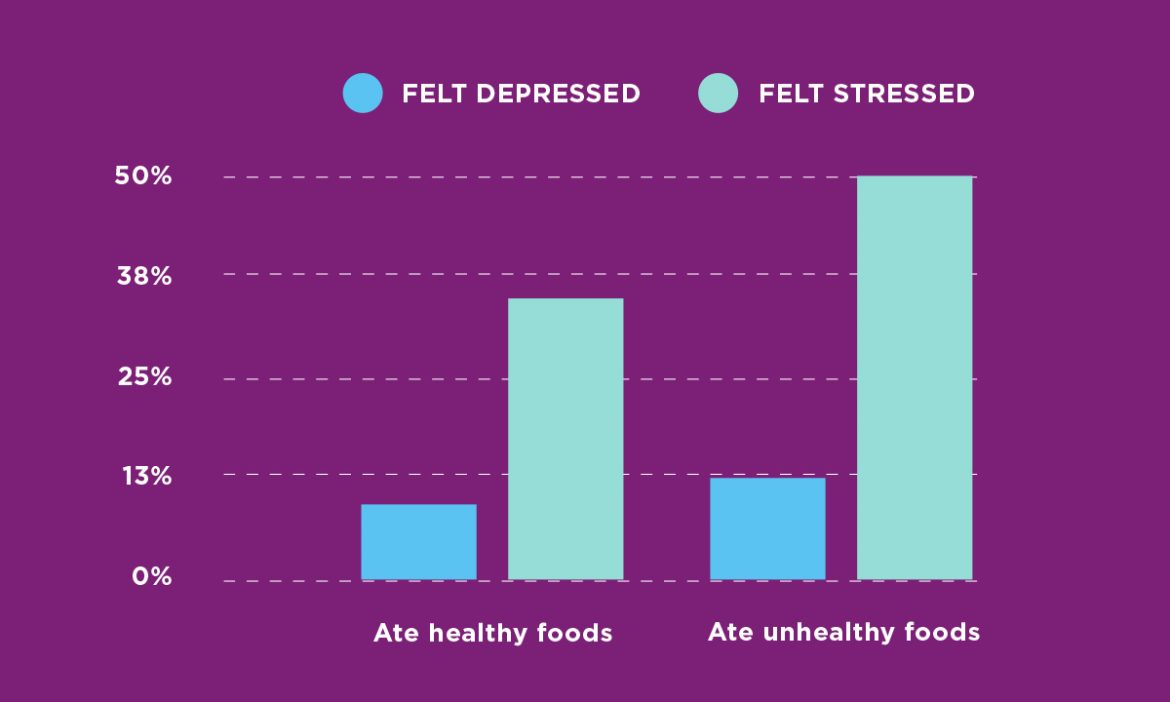Mac and cheese, fried chicken, biscuits and gravy, bacon — Tennessee is known the world over for its comfort food. While that’s great for our taste buds, it’s not always great for our health.
“Food and culture are intertwined all over the world, and that’s no different in the South,” says Brian Jones, registered dietitian-nutritionist at BlueCross BlueShield of Tennessee. “Whether we’re sick, celebrating or just getting together on Friday night, we tend to tie our memories to food, and more specifically to the food we ate growing up. Unfortunately, in Tennessee that food isn’t always the healthiest.”
1 in every 3 Tennesseans is overweight or obese
Why do we connect feelings to food?
The foods we associate with good memories, people or emotions become our “comfort foods.” If your grandparents always baked you chocolate chip cookies, eating cookies during stressful or sad times may feel familiar and comforting to you. Research has also shown that certain foods may have the power to make us feel less alone and more like we belong.
When does that connection become bad for your health?
While these foods may bring you comfort in the moment, calorie-rich, low-nutrient foods can damage your long-term health if you eat them too often. Interestingly, you may also be able to feel those negative effects as soon as the next day.
According to one report, 39-46% of Tennesseans say they don’t eat healthy despite knowing that what they eat affects their physical and emotional health. In a survey, people were asked whether they ate healthy the previous day and how they felt.
- Of people who said they did eat healthy the previous day, roughly:
- 8% reported feeling depressed, and
- 36% reported feeling stressed
- Of people who said they did not eat healthy:
- 12% reported feeling depressed, and
- 50% reported feeling stressed
How food can affect your mood

Furthermore, relying on food to pull you out of a funk can lead you into an unhealthy cycle.
You might:
- Feel bad
- Eat comfort food to feel better
- Feel better briefly but then
- Feel bad the next day or week
- Seek comfort food again
- And so on.
Creating a bad food habit

“If you fall into a pattern where you’re eating mac and cheese every time you’re upset, you’ll find that your comfort food is not really comforting you anymore,” says Jones. “But there are ways to make comfort food work for you.”
1. Recognize your triggers and patterns
Ask yourself: Why am I craving this food now? A food diary — on paper or through an app — may help you see connections you previously overlooked.
“A food diary doesn’t have to be overly detailed to be helpful, especially while you’re actively trying to lose weight,” says Jones. “If you notice that every Thursday you order Chinese food, consider the circumstances: Is that the day your boss comes in and is hard on you? Is that the day you meet your ex-wife to exchange the kids? Those could be triggers. Identifying patterns is the first step in changing them.”
2. Enjoy all parts of your meal, starting with preparation
Eating something you’ve made yourself can be more satisfying than ordering food, and a recipe doesn’t have to be complicated or time-consuming to give you that sense of satisfaction. Take time to enjoy preparing food and to appreciate how nourished you feel after you’ve eaten it.
3. Change up your recipes
If you simply have to have grandma’s fried chicken on Sunday, compromise by changing the recipe. Fry the chicken in healthier oils such as canola, olive or avocado or even try baking it. Small substitutions can make a big difference. Here are a few of Jones’ favorites:
- For sloppy Joes, use lean ground beef and a whole wheat bun, or serve open-faced using just half of the bun
- Make collard greens with chicken broth, herbs, onions and garlic and limit the amount of pork or bacon you use
- Replace half the meat in your chili with extra veggies and beans
“The chili swap is great because those beans will fill you up much like meat,” says Jones. “And remember: When it comes to looking for swaps, the Internet can be a great tool!”
Shopping tip: Buy meat that’s 90/10 (90% meat to 10% fat), even if it appears to be a little more expensive. You’ll cook the fat out anyway, which means you’ll be left with more meat at the end than if you choose a cheaper 80/20.
4. Don’t think of food as “good” or “bad”
“As dietitians, we don’t like to label foods ‘good’ or ‘bad,’” says Jones. “If you eat too much of anything it can become ‘bad.’ Instead, focus on balance, variety and moderation.”
5. Plan and compensate
If you know Sunday is chicken and dumplings night at your mom’s house, eat a lower calorie breakfast and lunch, and work in some extra exercise that day. Planning and compensating goes a long way.
6. Remember comfort food can be healthy, too
Comfort foods don’t have to be unhealthy. Chicken soup, for example, is something many of us have positive associations with that can be good for us. You can help determine what your family’s comfort food is. Have fun with that.
“One great cuisine to look to for inspiration is Indian food,” says Jones. “It’s vegetable-heavy and uses spices and herbs for flavoring — curry, coriander, mint — which makes it very flavorful and comforting”.
7. Give yourself time
Forming a habit can take up to 2 months, so don’t be discouraged if it takes a while to change your eating patterns.
“Initially you have to put forth a lot of effort to make or break a habit,” says Jones. “But after a few months, you’ll notice you’re doing the same healthy things without putting in nearly as much effort.”




